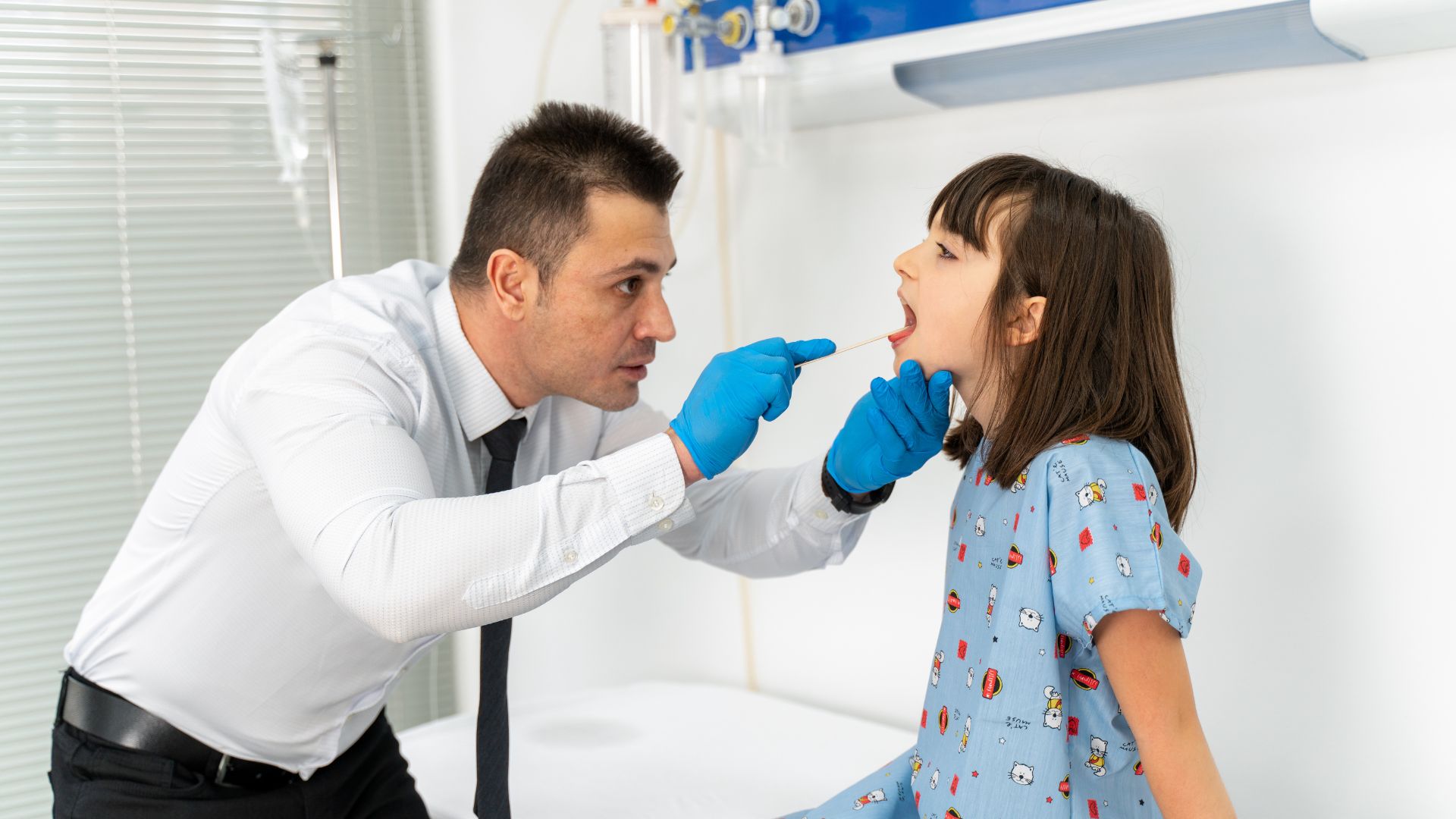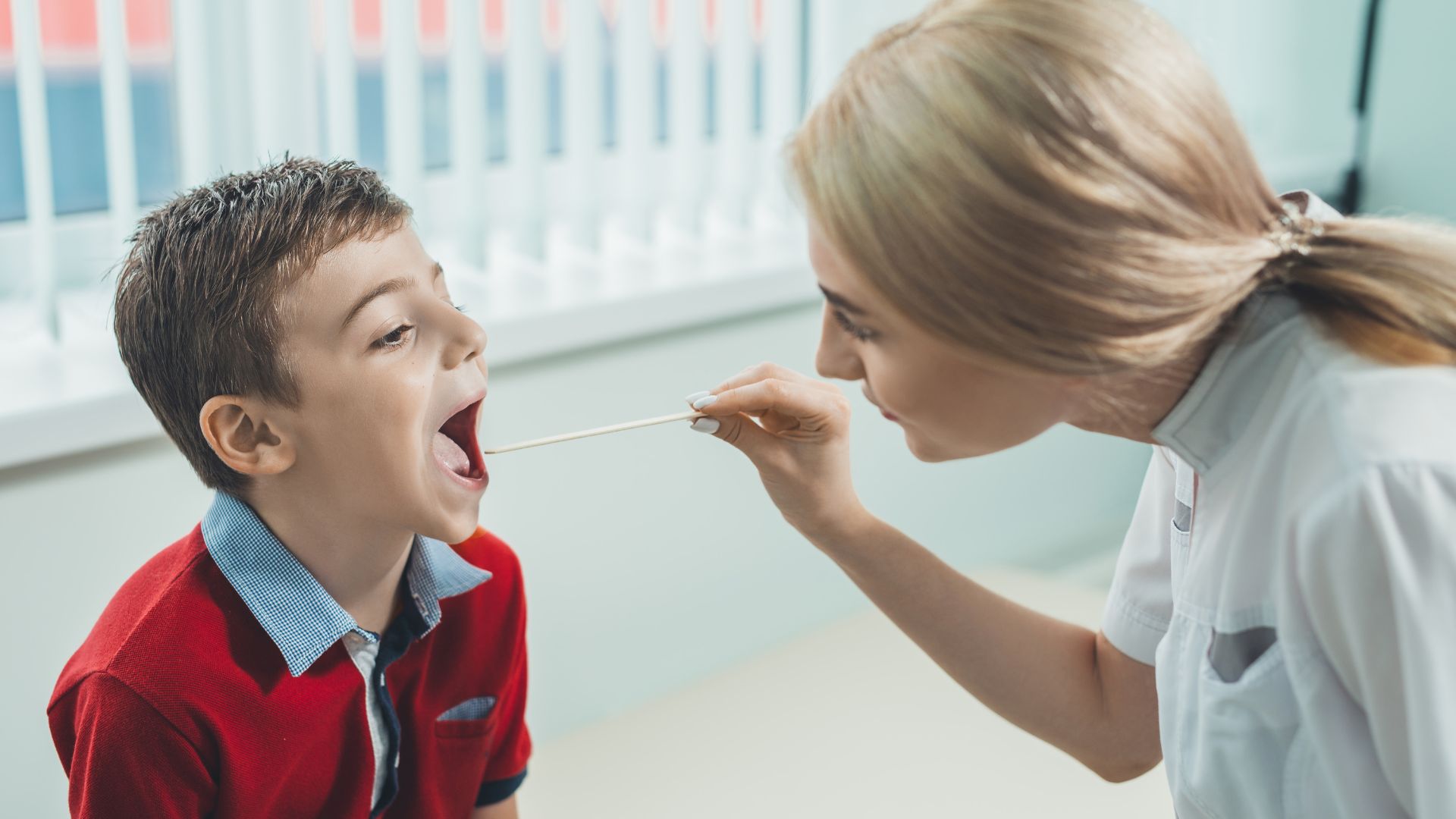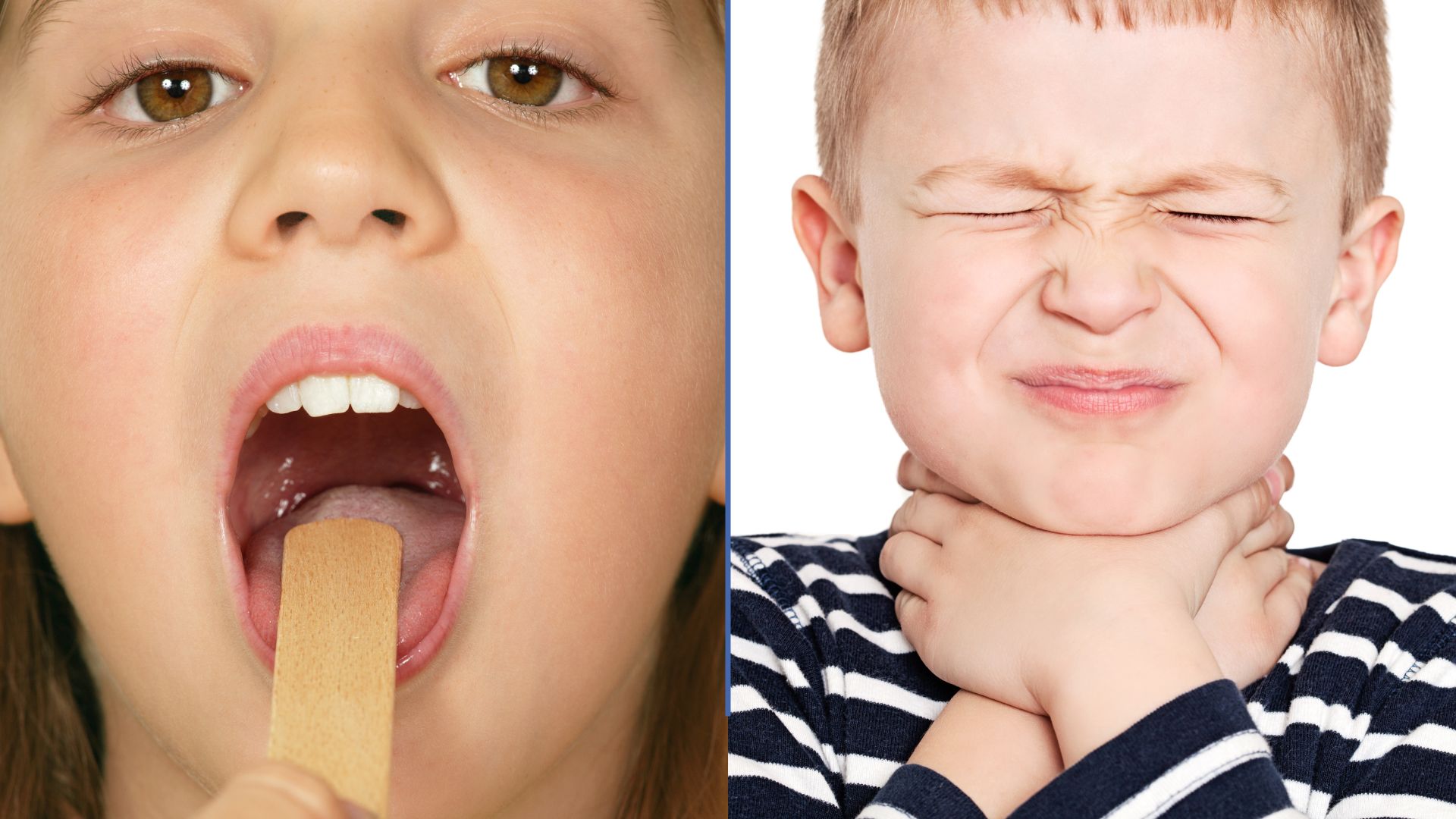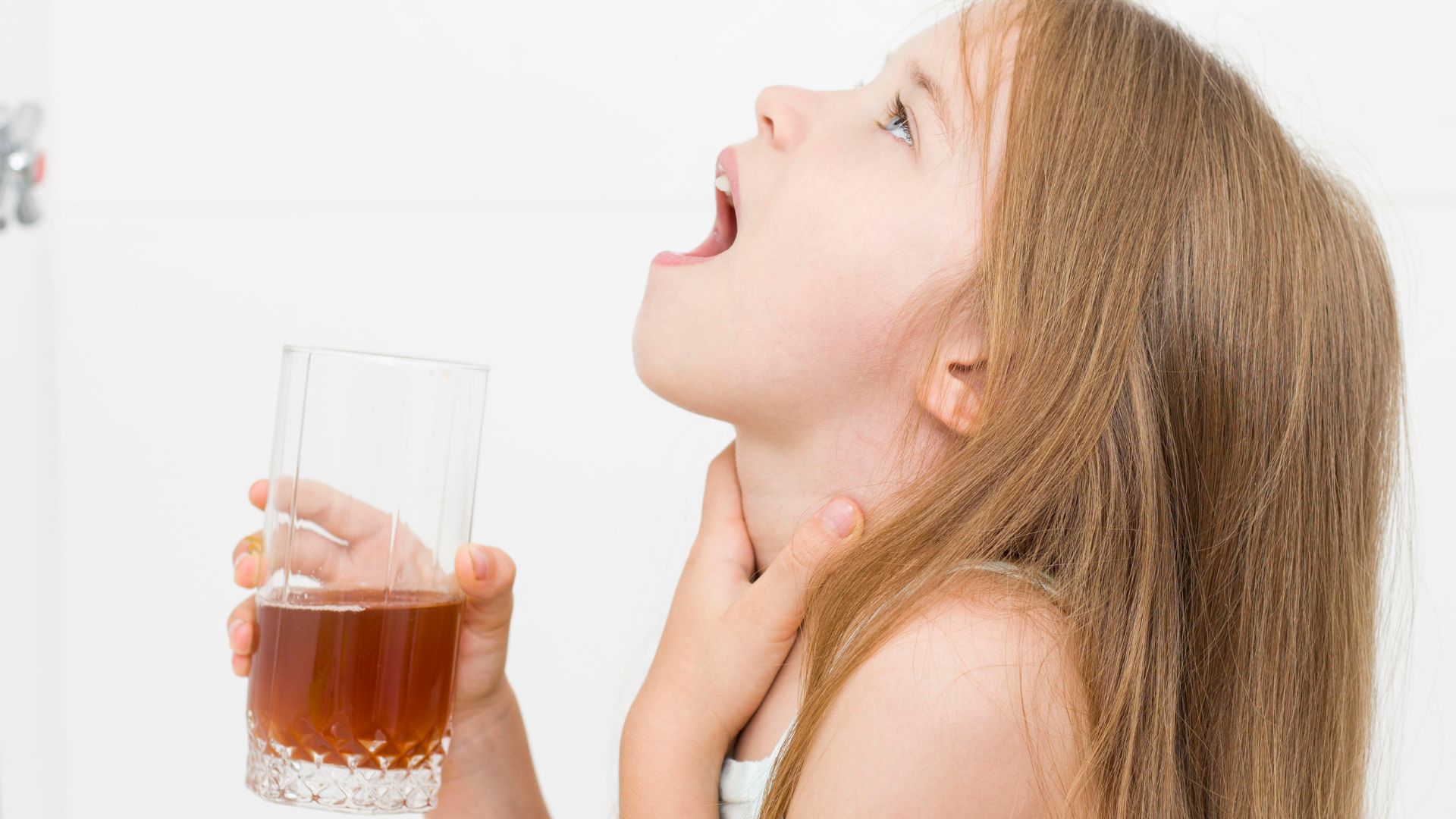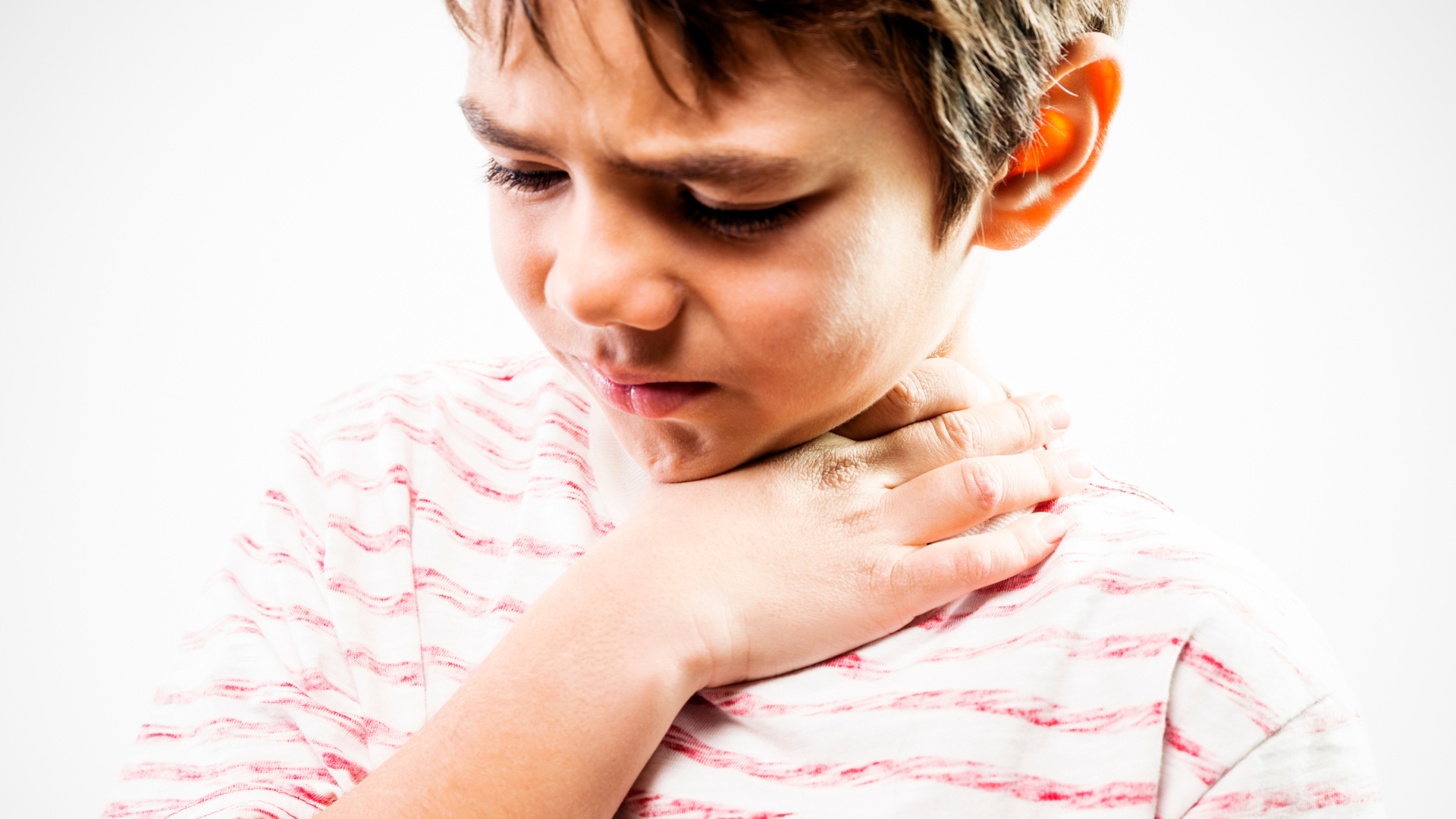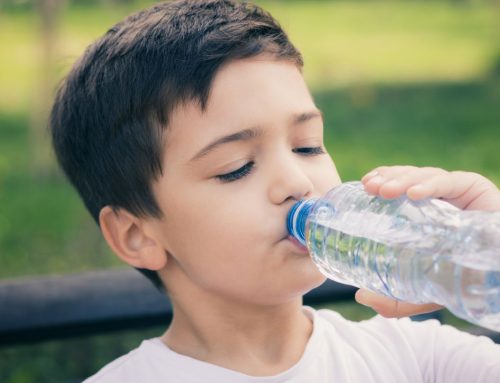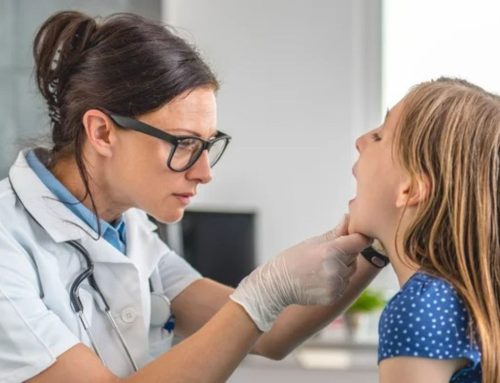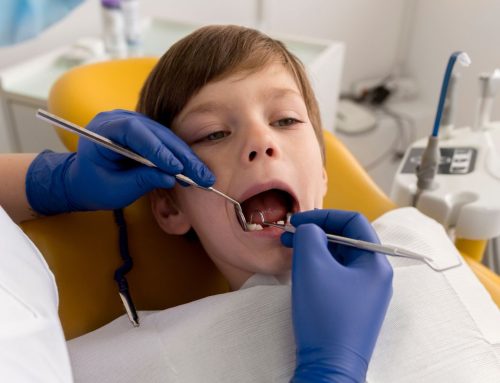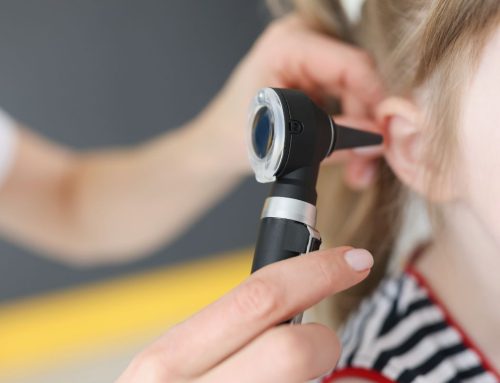If your child has a sore throat, recognizing if it’s strep throat is important for prompt treatment. The symptoms of strep throat in kids, such as a sudden severe sore throat, fever, and red swollen tonsils, can help you identify the condition early. This article will detail these symptoms, how they differ from other sore throats, and when to see a doctor.
Key Takeaways
- Strep throat, primarily affecting children aged 5 to 15, is characterized by a severe sore throat, high fever, and red, swollen tonsils, often requiring a swift medical response.
- Complications from untreated strep throat can include serious conditions such as rheumatic fever and kidney inflammation, underscoring the importance of timely antibiotic treatment.
- Preventative measures, including good hygiene practices and avoiding close contact with infected individuals, are essential to reduce the spread of strep throat among children.
Recognizing Strep Throat in Kids
Strep throat, which is an infection resulting from the Group A streptococcus bacteria, frequently leads to sore throats among school-age children. This condition most commonly affects those between 5 and 15 years old but can also appear in younger children, even those under three years of age, occasionally. Early detection of a strep infection is crucial since young ones might not be able to articulate their discomfort adequately. They may instead become cranky or experience trouble swallowing — signs that could point toward strep infections.
The risk extends beyond the affected child. Due to close proximity with family members such as siblings and adults like teachers and caregivers, there’s a high potential for spreading strep throat contagiously within both home environments and educational settings. Families being alert to these symptoms should act swiftly by seeking appropriate medical attention when necessary.
Common Symptoms of Strep Throat in Children
A severe sore throat that appears abruptly is frequently a sign of strep throat. This type of sore throat, which distinguishes itself from the majority caused by viruses, can cause significant discomfort and symptoms such as fever and swollen tissues. A prominent indication of strep infection includes redness and swelling in the throat, with white patches or pus evident on the tonsils.
The act of swallowing might be sharply painful when afflicted with this condition, and small red spots may emerge within the oral cavity. If these particular signs manifest rapidly, it’s essential to seek medical attention to obtain a test for an accurate diagnosis.
Additional Signs to Look Out For
Initially:
Although the primary symptoms of strep throat are easily recognizable, it’s important to be vigilant for additional signs and symptoms. Children frequently experience headaches and stomach pain when afflicted with strep throat. Nausea and vomiting can also present themselves, albeit more rarely. A rash characterized as scarlet fever may emerge, which tends to affect children rather than adults.
Subsequently:
Even though the principal indicators of strep throat are prominently discernible, one must consider other possible signs and symptoms.
- Headaches
- Stomach discomfort (often seen in children with strep throat)
- Nausea accompanied by vomiting (though this is less typical)
- A skin eruption known as scarlet fever (predominantly found in pediatric cases compared to adult ones)
Parents should exercise increased vigilance if their child’s sore throat does not subside after two days. The appearance of small red dots on the rear portion of the oral cavity could signal an infection from strep throat. In such instances where these manifestations occur, professional medical evaluation becomes crucial for prompt intervention.
How Strep Throat Differs from Other Sore Throats
Severe throat pain and high fevers are often indicative of strep throat, setting it apart from sore throats caused by a viral infection. Notably, strep throat can manifest abruptly with swollen lymph nodes and an elevated temperature above 101°F (38°C). Redness and swelling in the tonsils that may feature white patches tend to be more associated with this bacterial condition.
In contrast to strep throat, symptoms such as coughing, runny nose, or pink eye typically signal a viral cause rather than a bacterial. These distinguishing factors are useful for identifying whether the sore throat is due to a virus. For younger children, experiencing stomachaches and headaches along with these other signs might lead one to incorrectly attribute them to different ailments.
Recognizing these distinct features not only helps differentiate between types of infections but also ensures that individuals receive proper diagnosis and prompt treatment when dealing with such illnesses.
When to Contact a Doctor
It is crucial to seek medical attention if symptoms indicative of strep throat arise. Symptoms may include intense throat pain, high fever, and trouble swallowing. Parents should be vigilant and not expect these signs to dissipate without intervention. Neglecting treatment for strep throat could result in grave health issues.
Should there be no noticeable improvement within one to two days after initiating antibiotic treatment for strep throat, it’s imperative to get back in touch with a healthcare professional. A lack of progress by the third day demands an evaluation by a doctor to confirm that the bacterial infection is adequately being addressed.
Diagnosing Strep Throat in Kids
The process of diagnosis begins with the identification of symptoms and involves seeking advice from a medical professional. The initial method for diagnosing strep throat is through a rapid strep test, which detects antigens linked to Streptococcus pyogenes, the bacterium responsible for causing this condition. Typically, it produces results in as little as 10 to 20 minutes, facilitating a swift diagnosis.
Should there be a negative outcome from the rapid strep test but strong indications still point toward strep throat, then a secondary verification via throat culture is warranted. This subsequent examination can take up to one or two days before yielding findings. Its importance lies in confirming an accurate diagnosis and laying out an effective course of treatment.
Treatment Options for Strep Throat
When strep throat is confirmed, initiating antibiotic treatment without delay is key to averting health issues. Penicillin stands as the recommended choice of antibiotic, and it’s typically administered over a span of ten days. For those being treated for strep throat, amoxicillin also frequently serves as an alternative prescription. Ensuring that patients complete the entire course of antibiotics provided by their healthcare professional is imperative to thoroughly eliminate the infection and decrease the chances of its return.
Within 24 hours after starting antibiotics, most kids begin to exhibit signs of improvement from strep throat symptoms. Should there be no sign of progress within two days, seeking medical guidance becomes essential. Beyond symptom relief, antibiotics play a vital role in curtailing how long individuals remain infectious. They allow children to resume attending school or daycare safely just one day into their treatment regime.
Adhering strictly to the designated schedule for taking prescribed antibiotics is critical not only for reducing potential complications but also for facilitating swift healing from strep throat infections.
Preventing Strep Throat
It is preferable to prevent illness rather than treat it, and maintaining proper hygiene stands as the most effective defense against strep throat. Consistently washing hands with soap and water, particularly before meals and following coughs or sneezes, is vital. In instances where soap and water are inaccessible, employing alcohol-based hand sanitizers can offer protection.
Avoiding the sharing of eating utensils with those who are infected remains a key measure in preventing transmission. When you cough or sneeze, using a tissue or your elbow to shield your mouth and nose helps minimize the dissemination of germs.
Adhering to these straightforward but impactful habits can markedly reduce both acquiring strep throat yourself and transmitting it to others.
Potential Complications from Untreated Strep Throat
If strep throat is not addressed in a timely manner, it can escalate into grave conditions such as rheumatic fever and inflammation of the kidneys. Rheumatic fever has the potential to inflict lasting damage to the heart and increase stroke risk when strep throat isn’t adequately controlled. Preventing these dire consequences necessitates early detection and swift intervention, particularly in young patients.
Leaving strep throat untreated may also result in abscesses around the tonsils, along with other critical complications, including kidney inflammation. It is crucial to commence antibiotic treatment as soon as a diagnosis is confirmed, aiding in averting severe health problems and ensuring complete recuperation.
Home Care Tips for Comfort
Antibiotics are a critical element in the treatment of strep throat, but managing your child’s comfort at home is also vital during the recovery process. Ensuring that your child drinks plenty of fluids is important for easing difficulties with swallowing and to ward off dehydration. Providing gentle, easy-to-swallow foods such as applesauce or yogurt can be soothing and aid in reducing soreness from swallowing when strep throat is treated attentively.
For older children and adults suffering from discomfort due to strep throat, gargling with warm salt water may offer symptomatic relief for their painful throats. Utilizing a cool-mist humidifier helps by introducing moisture into the environment, which can help soothe an irritated throat. It’s equally essential to steer clear of irritants like cigarette smoke since they have the potential not only to amplify irritation within the throat but also increase susceptibility to infections.
Summary
It is crucial to identify and address strep throat in children swiftly to avert grave repercussions. The condition typically manifests with an intense sore throat, elevated body temperature, and redness accompanied by the inflammation of the tonsils. Immediate identification via rapid tests for strep or culture examinations of the throat facilitates early administration of antibiotics, which promotes speedy recuperation.
Employing preventative tactics like maintaining excellent cleanliness habits and eschewing the use of communal eating tools can assist in diminishing the transmission risk associated with strep throat. Parents who remain alert and procure expeditious medical attention contribute significantly to their child’s rapid recovery while circumventing possible serious complications.
At Pediatric Ear Nose and Throat of Atlanta, P.C., we are committed to providing quality care for your child’s health needs. Whether it’s addressing strep throat or other ear, nose, and throat conditions, our team of specialists is here to offer you the best possible medical attention. Your child’s well-being is our priority, and we are dedicated to ensuring their swift recovery and long-term health.
Don’t wait—schedule an appointment with us today to ensure your child receives the care they deserve.
Frequently Asked Questions
What are the most common symptoms of strep throat in children?
The most common symptoms of strep throat in children include a severe sore throat, fever, red and swollen tonsils, and the presence of white patches or pus on the tonsils.
It is essential to monitor these symptoms for appropriate medical attention.
How is strep throat diagnosed in kids?
Strep throat is diagnosed in children primarily through a rapid strep test, which provides results in 10 to 20 minutes. If the rapid test is negative and symptoms continue, a throat culture may be performed for confirmation.
What are the treatment options for strep throat in children?
For children with strep throat, the most common forms of treatment are antibiotics.
It is crucial to finish the entire prescribed course of antibiotics to successfully eliminate the infection.
What preventive measures can be taken to avoid strep throat?
To effectively prevent strep throat, it is crucial to practice good hygiene, such as regular hand washing and avoiding the sharing of eating utensils.
These measures significantly reduce the risk of infection.
Why is it important to treat strep throat promptly?
Prompt treatment of strep throat is essential to avert grave complications, including rheumatic fever and kidney inflammation, as well as the potential development of abscesses around the tonsils.
The risk of these serious health issues can be considerably reduced through early administration of antibiotics.

